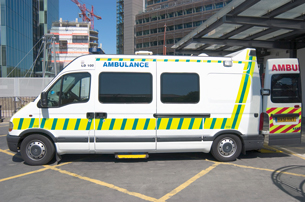Module 8—Mechanical Waves
 Big Picture
Big Picture

© Darko Novakovic/shutterstock
Have you ever been at a concert where you could feel the music? Have you ever been at the movie theatre where you could feel the sound? Just what were you feeling, and what exactly was the physics behind it? Once you’ve had that experience, you know that sound waves can transmit a lot of energy.

© Graham Prentice/shutterstock
Sound isn’t the only wave that can transmit energy. Think about a sunny, tropical beach with the waves rolling in from the ocean. This is another type of wave, and it, too, is carrying energy. If you’ve ever stood on a beach and let a small wave hit you, you know there is energy in waves. If you have ever seen someone surf in the ocean or have surfed yourself, you will have seen great amounts of energy at work in the rising and falling of water—enough, in fact, to pulverize rock and turn it into sand.
Water waves can also appear as ripples on the water. Think about what happens when you drop a small pebble into water. These waves also transmit energy.
If you look around, you’ll see waves and vibrations in lots of different places. Music, like water, provides many good examples when you are talking about waves. The sound waves that make up music can be quite regular, and many instruments make it easy to figure out how the sound is produced.

top, left: © Susan Stevenson/shutterstock
top, right: © Keith Lamond/iStockphoto
bottom: © doctor bass/shutterstock,
It may be hard to accept, but the sounds of a gentle Celtic harp and a jackhammer both get to your ears the same way. In this case, you might want to disagree with Marshall McLuhan’s quotation, “The medium is the message,” as you look closely at the jackhammer operator and the ear protection needed. This is another indication of the energy that sound can deliver.

© 2007 Jupiterimages Corporation
An important non-musical sound is an ambulance siren. It’s definitely not musical, but the sounds produced by the siren have been chosen just as carefully as the notes chosen by a composer for a song. They need to be heard. They need to pierce through the noise in the environment, yet they cannot be so loud as to damage the hearing of people who are close to the ambulance. You’ve probably heard another interesting thing about sirens on emergency vehicles. They don’t sound the same as they approach and move away from you.
As you work through this module, keep the following questions in mind. They should help you understand mechanical waves.
- What are the properties of mechanical waves?
- What is the difference between a transverse wave and a longitudinal wave?
- How does the universal wave equation relate the frequency, speed, and length of a wave?
- What is the difference between a wave and a ray?
- What happens when a wave encounters a boundary?
- What is Hyguens’ Principle? How can it help understand wave reflection?
- How can waves be described using phase and phase angle?
- What is constructive and destructive wave interference?
- What is wave superposition?
- What is a standing wave? How is this related to musical tones?
- How is a standing wave produced in a closed-air column?
- What is the relationship between wavelength and air column length for a closed resonating air column?
- How is a standing wave produced in an open-air column?
- What is the relationship between wavelength and air column length for an open resonating air column?
- What is path length and path difference?
- What is the relationship between path difference and constructive/destructive interference?
- What are nodal and antinodal lines?
- What happens to the wavelength and frequency of sound that is produced by a moving source?
- How does the Doppler equation describe the frequency observed by a moving sound source?